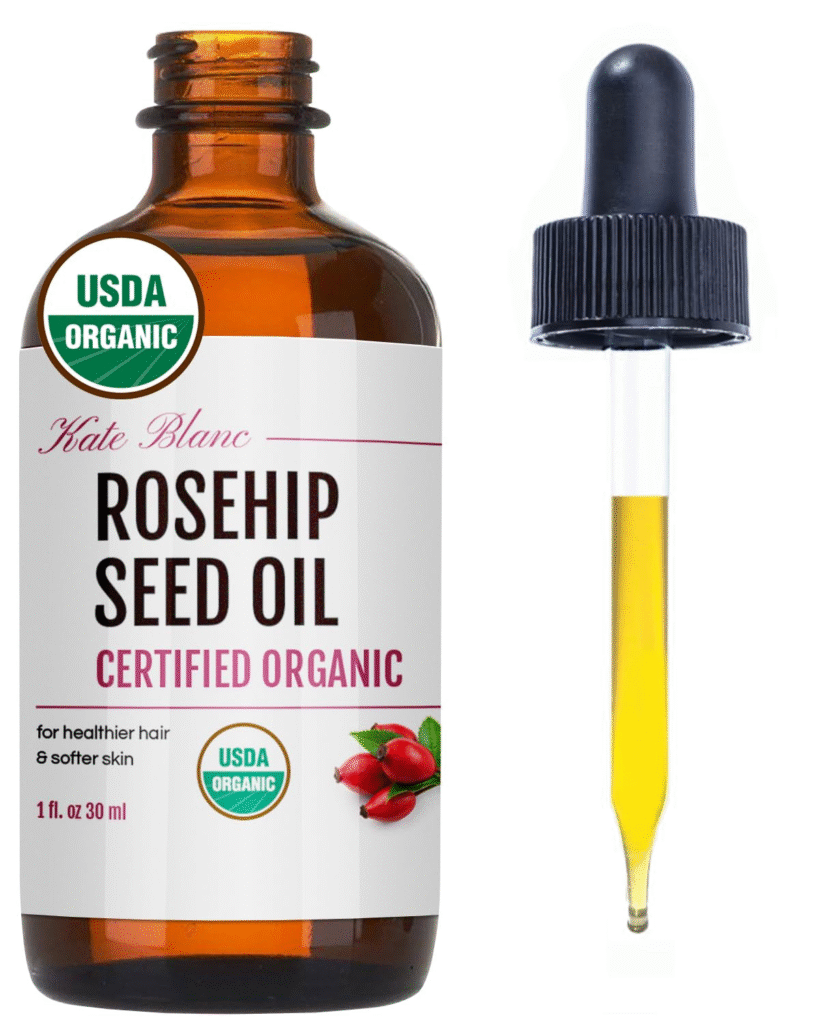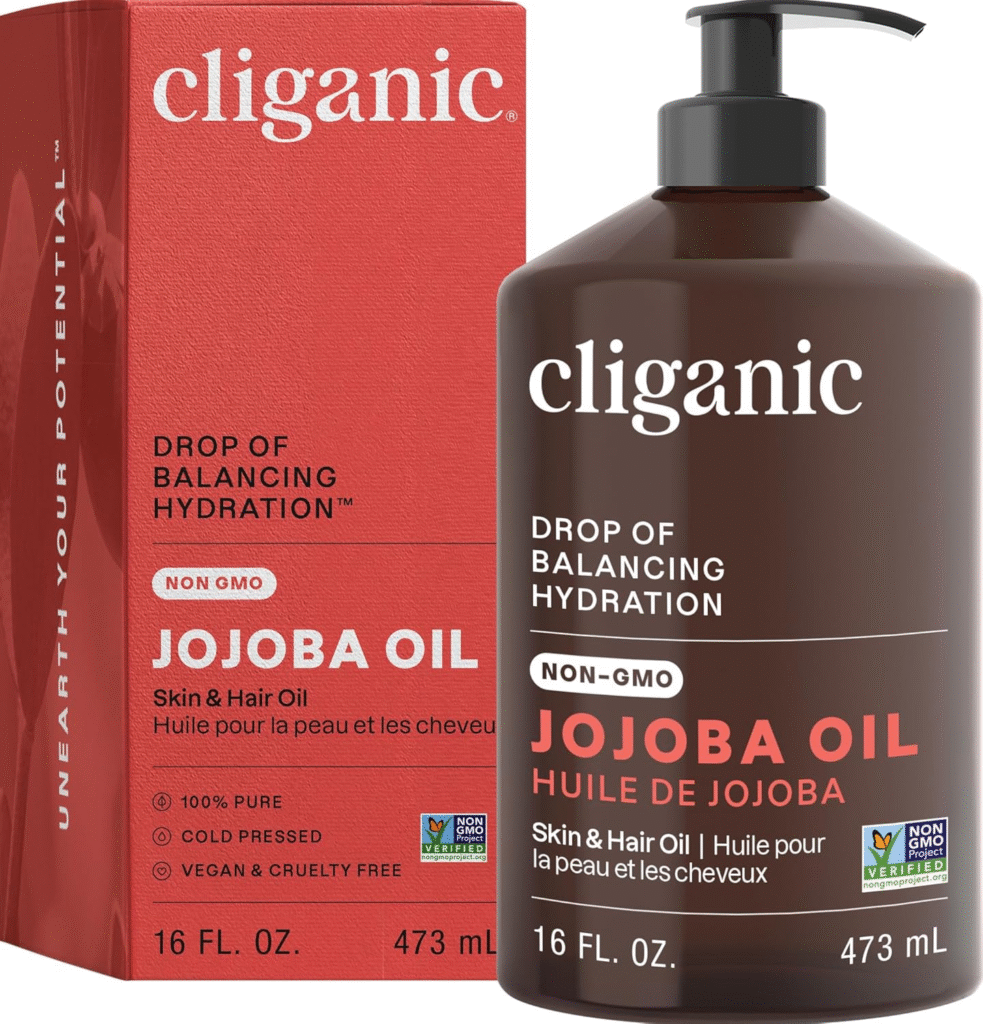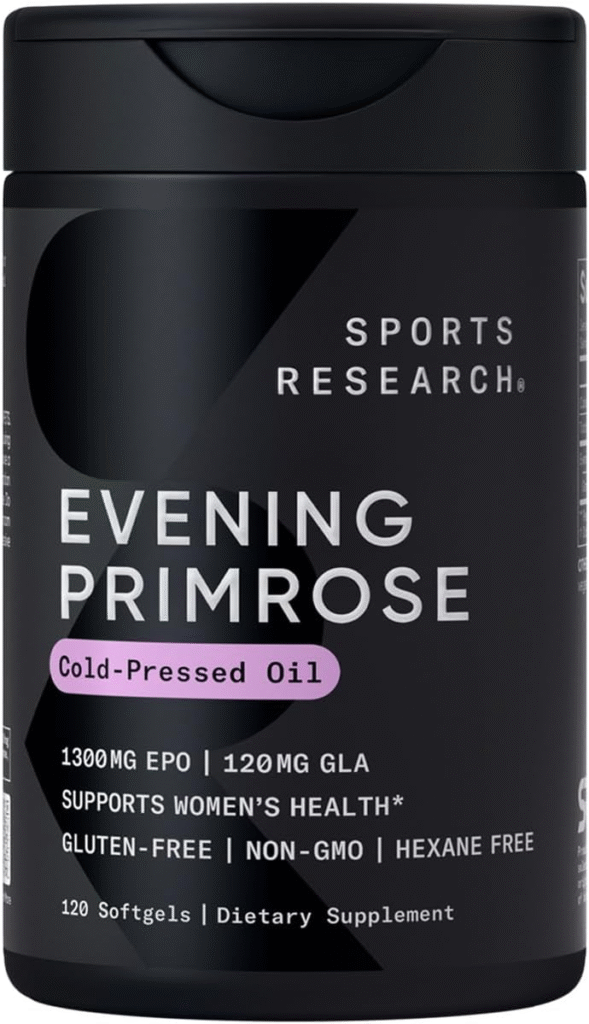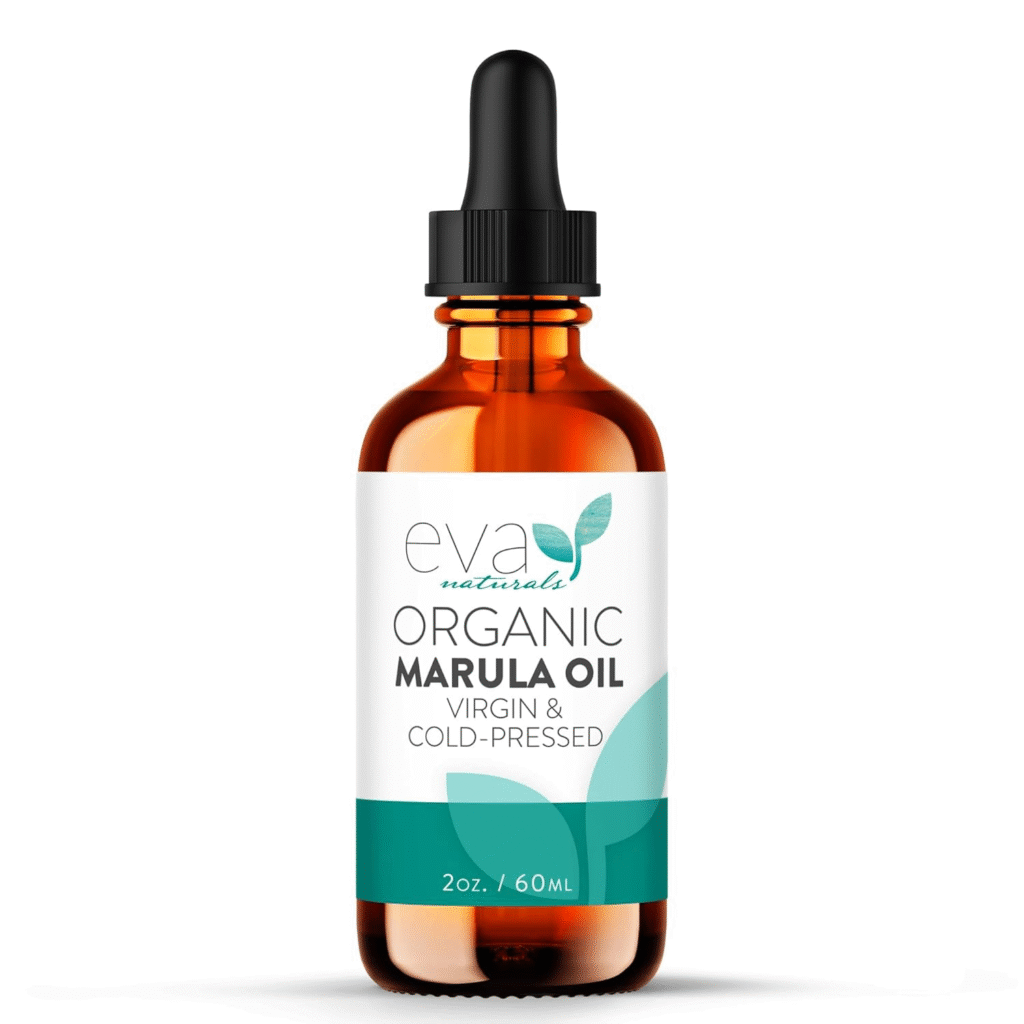As we age, our skin undergoes significant changes, especially during menopause. The decrease in estrogen levels can lead to dryness, fine lines, and a loss of elasticity.
Incorporating facial oils into your skincare routine can be a game-changer for menopausal skin. Let’s explore the top five facial oils that can help maintain that youthful glow and address the unique challenges of menopausal skin.
Understanding Menopausal Skin
Menopause brings about hormonal changes that significantly impact our skin. The decrease in estrogen production leads to a reduction in collagen and elastin, two proteins essential for skin structure and elasticity. This results in thinner, drier skin that’s more prone to wrinkles and sagging.
Additionally, the skin’s natural barrier function may become compromised, making it more susceptible to irritation and environmental damage. Many women also experience increased skin sensitivity and may develop adult acne because of hormonal fluctuations.
These changes call for a skincare routine that focuses on intense hydration, barrier repair, and gentle nourishment. Facial oils, with their concentrated blend of nutrients and fatty acids, are particularly well-suited to address these concerns.
1. Rosehip Oil
Rosehip oil has gained popularity in recent years because of its impressive array of skin benefits, particularly for aging skin. This oil is extracted from the seeds of rose bushes, primarily Rosa canina and Rosa rubiginosa.
Benefits for Menopausal Skin:
- Rich in Vitamins A and C: These vitamins are crucial for promoting collagen production and cell turnover. For menopausal skin, this translates to improved elasticity and a reduction in the appearance of fine lines and wrinkles.
- High in Linoleic Acid: This omega-6 fatty acid helps strengthen the skin barrier, which is particularly useful for menopausal skin that often struggles with moisture retention.
- Natural Retinol Alternative: The high vitamin A content in rosehip oil makes it a gentler alternative to synthetic retinoids, helping to improve skin texture and tone without irritation.
- Antioxidant Properties: Rosehip oil contains antioxidants that protect the skin from free radical damage, which becomes increasingly important as we age.
Recommended Product: Kate Blanc Cosmetics Rosehip Oil for Face & Skin
How to Use:
Apply 2-3 drops of rosehip oil to clean, slightly damp skin in the evening. Gently press the oil into your skin rather than rubbing it.
You can use it alone or mix it with your night cream for an extra boost of hydration.
For best results, look for cold-pressed, organic rosehip oil. This confirms you’re getting the highest quality and most potent form of the oil.
2. Jojoba Oil
Jojoba oil is unique among facial oils because its molecular structure closely resembles that of our skin’s natural sebum. This similarity allows it to balance oil production effectively.
Benefits for Menopausal Skin:
- Balancing Properties: Jojoba oil can help regulate sebum production, making it useful for menopausal skin that may be experiencing both dryness and occasional breakouts.
- Non-Comedogenic: It won’t clog pores, which is a common concern for those experiencing hormonal acne during menopause.
- Rich in Vitamin E: This powerful antioxidant helps protect the skin from free radical damage, which is particularly important for menopausal skin that’s more susceptible to environmental aging.
- Moisturizing Without Heaviness: Jojoba oil provides deep hydration without feeling greasy or heavy on the skin.
Product Recommendation: Cliganic Jojoba Oil Non-GMO
How to Use:
Jojoba oil is versatile enough to be used both morning and night. In the morning, mix a drop or two with your moisturizer for added hydration.
At night, you can use it more liberally, massaging 4-5 drops into your skin after cleansing.
3. Argan Oil
Often referred to as “liquid gold,” argan oil hails from Morocco and has gained a reputation as a potent anti-aging ingredient.
Benefits for Menopausal Skin:
- Rich in Vitamin E and Fatty Acids: These nutrients work together to nourish and protect the skin, helping to combat the dryness often associated with menopausal skin.
- Improves Skin Elasticity: Argan oil helps restore some of the bounce and firmness that skin loses during menopause.
- Lifting Effect: It can help to tighten and firm the skin, which is particularly useful for areas that may be starting to show signs of sagging.
- Contains Squalene: This compound mimics our skin’s natural oils, making argan oil an excellent choice for sensitive or reactive skin, which is common during menopause.
Recommended Poduct: Ella & Eden Organic Argan Oil
How to Use:
Argan oil can be used morning and night. In the morning, warm 2-3 drops between your palms and press gently into your skin before applying sunscreen.
At night, you can use a bit more, massaging it into your skin with upward motions to take advantage of its firming properties.
4. Evening Primrose Oil
Evening primrose oil is derived from the seeds of the evening primrose plant and is known for its hormone-balancing properties.
Benefits for Menopausal Skin:
- Rich in Gamma-Linolenic Acid (GLA): This omega-6 fatty acid helps balance hormones and reduce inflammation, which can be particularly useful for menopausal skin.
- Addresses Hormonal Acne: Its anti-inflammatory properties can help soothe and clear hormonal breakouts that some women experience during menopause.
- Improves Skin Elasticity: Evening primrose oil can help plump up the skin, reducing the appearance of fine lines and wrinkles.
- Soothes Sensitive Skin: Its gentle, nourishing properties make it ideal for the increased skin sensitivity that often comes with menopause.
Recommended Product: Sports Research Evening Primrose Oil
How to Use:
Evening primrose oil is best used at night. Apply 3-4 drops to clean skin, gently massaging it in. If you find it too rich on its own, you can mix it with your night cream or another facial oil like jojoba for a more balanced application.
5. Marula Oil
Marula oil, derived from the kernels of the marula fruit, is packed with antioxidants and fatty acids, making it a powerful ally for menopausal skin.
Benefits for Menopausal Skin:
- High in Antioxidants: This helps combat free radical damage and premature aging, which is crucial for menopausal skin that’s more susceptible to oxidative stress.
- Rich in Oleic Acid: This fatty acid is incredibly nourishing and helps lock moisture into the skin, addressing the dryness often associated with menopause.
- Contains Amino Acids: These are the building blocks of collagen and elastin, supporting the production of these crucial proteins that decline during menopause.
- Fast Absorption: Marula oil sinks quickly into the skin, providing deep hydration without feeling heavy or greasy.
Recommended Product: Eva Naturals Marula Oil
How to Use:
Marula oil is lightweight enough to be used both morning and night. In the morning, apply 2-3 drops under your moisturizer and sunscreen.
At night, you can use it more liberally, either on its own or mixed with your night cream.
Incorporating Facial Oils into Your Skincare Routine
Now that we’ve explored these fantastic facial oils, you might be wondering how to incorporate them into your skincare routine. Here are some tips to help you get started:
- Start with Clean, Damp Skin: Always apply facial oils to freshly cleansed skin. A slight dampness helps the oil absorb better.
- Use Only a Few Drops: A little goes a long way with facial oils.
Start with just 2-3 drops and increase if needed.
- Apply with Gentle Pressure: Instead of rubbing the oil into your skin, use gentle pressing motions.
This helps with absorption and gives you a moment for some self-care.
- Layer Correctly: If you’re using other skincare products, apply the facial oil after your water-based serums but before your moisturizer.
This helps seal in the benefits of your other products.
- Consider Your Skin Type: If you have oily or combination skin, you might prefer to use facial oils only at night.
For dry skin, using them twice a day can be useful.
- Don’t Be Afraid to Mix: You might find that a blend of two or more oils works best for your skin. For example, mixing rosehip oil with jojoba oil can provide both anti-aging benefits and balancing properties.
- Be Patient: It can take a few weeks for your skin to adjust to a new product.
Give your chosen oil time to work before deciding if it’s right for you.
- Patch Test: Always perform a patch test before applying a new oil to your face, especially if you have sensitive skin.
The Importance of Facial Massage
Incorporating facial massage into your oil application routine can enhance the benefits of your chosen oil. Facial massage promotes circulation, reduces puffiness, and can even help to lift and tone the skin.
Here’s a simple facial massage routine to try:
- Start by warming a few drops of oil between your palms.
- Begin at the center of your face and use upward, outward strokes to apply the oil.
- Use your fingertips to make small, circular motions along your jawline, moving up towards your ears.
- Gently tap around your eyes, being careful not to pull the delicate skin.
- Use your knuckles to make upward strokes along your neck.
- Finish by gently pinching along your eyebrows and hairline to stimulate circulation.
Spending just a few minutes each night on facial massage can make a significant difference in the appearance and health of your skin.
Embracing Your Skin at Every Stage
Menopause marks a new chapter in our lives, and our skincare routine should evolve to meet our changing needs. The facial oils we’ve discussed provide targeted nourishment and support for menopausal skin, helping to address common concerns like dryness, loss of elasticity, and increased sensitivity.
Everyone’s skin is unique, and what works for one person may not work for another. It’s worth experimenting with different oils or combinations to find what works best for you.
And always listen to your skin – if it feels nourished, plump, and comfortable, you’re on the right track.
Caring for your skin during menopause isn’t about maintaining a youthful appearance. It’s about nurturing and protecting your skin as it adapts to new hormonal realities.
With the right care and nourishment, your skin can continue to reflect your inner vitality and radiance.
People Also Asked
What causes skin changes during menopause?
Hormonal fluctuations, particularly the decrease in estrogen, lead to changes in skin texture, elasticity, and hydration levels during menopause.
How can I improve skin elasticity after menopause?
Regular use of facial oils rich in antioxidants and fatty acids, combined with a healthy diet, adequate hydration, and sun protection, can help improve skin elasticity.
Are facial oils suitable for all skin types?
Most facial oils can be used on all skin types, but those with oily or acne-prone skin should choose lighter oils like jojoba or grapeseed.
How often should I use facial oil on menopausal skin?
For most people, using facial oil once or twice daily is useful. Those with very dry skin may prefer to use it more often.
Can facial oils replace moisturizer?
While facial oils provide excellent hydration, they work best when used in conjunction with a moisturizer, especially for menopausal skin that needs extra hydration.
What’s the best way to apply facial oil?
Warm a few drops of oil between your palms and gently press it into clean, slightly damp skin. Avoid rubbing vigorously.
Can facial oils help with menopausal acne?
Some facial oils, like jojoba and evening primrose, have balancing properties that can help manage hormonal acne associated with menopause.
How long does it take to see results from using facial oils?
While some benefits like increased hydration are immediate, it typically takes 4-6 weeks of consistent use to see significant improvements in skin texture and tone.
Are natural oils better than synthetic skincare products for menopausal skin?
Natural oils can provide concentrated nutrients and are often well-tolerated by sensitive skin, but a combination of natural and well-formulated synthetic products often yields the best results.
Can facial oils help with menopausal hot flashes?
While facial oils can’t directly prevent hot flashes, their cooling and soothing properties can provide relief when applied to the skin during a hot flash.
Key Takeaways:
- Rosehip oil promotes collagen production and strengthens the skin barrier.
- Jojoba oil balances oil production and closely mimics our skin’s natural sebum.
- Argan oil improves elasticity and has a lifting effect on the skin.
- Evening primrose oil helps balance hormones and reduces inflammation.
- Marula oil is rich in antioxidants and provides deep, long-lasting hydration.
Disclaimer
The information contained in this post is for general information purposes only. The information is provided by Top 5 Facial Oils for Menopausal Skin and while we endeavor to keep the information up to date and correct, we make no representations or warranties of any kind, express or implied, about the completeness, accuracy, reliability, suitability or availability with respect to the website or the information, products, services, or related graphics contained on the post for any purpose.





